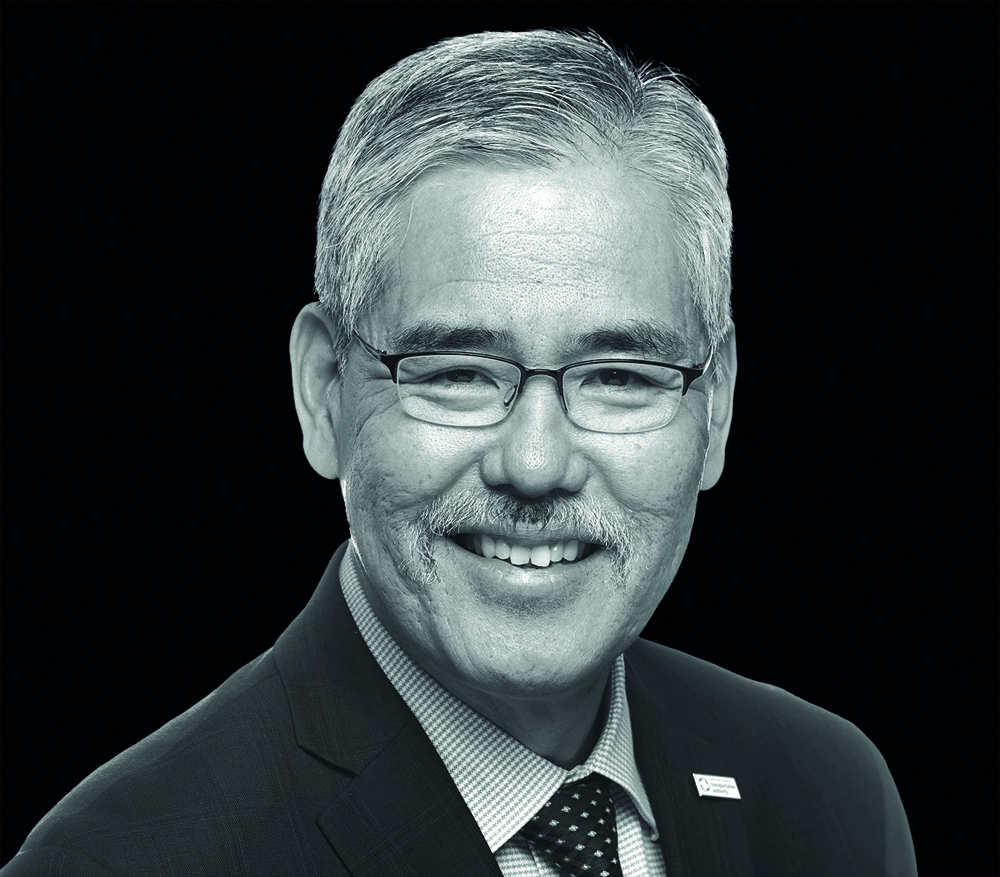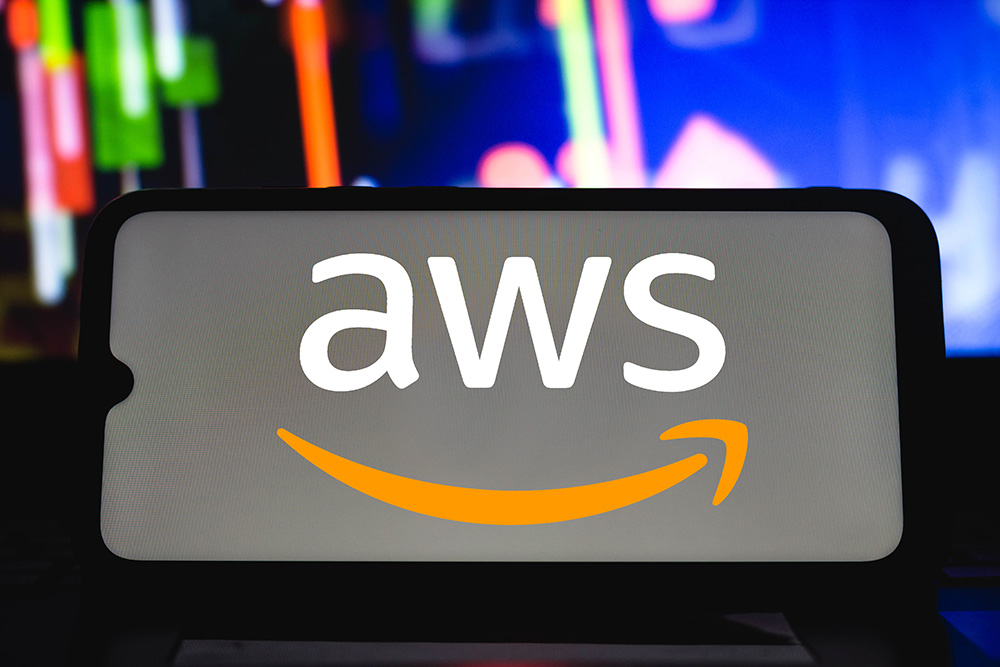
Randy Iwasaki has the answers to a number of questions: how safe is my transportation data? How does my DoT migrate to the cloud? And finally, have you met Jeff Bezos? Since the start of 2021, Iwasaki has led the transportation division at Amazon Web Services (AWS). It focuses on various ‘sub-verticals’: airports, seaports, departments of motor vehicles (DMVs), departments of transportation (DoTs), traffic management, transit agencies, parking, toll roads and finally, metropolitan planning organisations (MPOs) & councils of government (COGs). There are 18 MPOs in California alone, and a “large number scattered around the US”, he says.
AWS decided three years ago to focus on transportation. The lean, four-person team that Iwasaki heads up is in the business of problem solving.
“We call on the state and local government sector in the US in those sub-verticals and ask: ‘what are your top-of-mind issues?’” he begins. “Say you’re the DoT of x, in the state of x, and you have issues with asset management or you don’t understand what migrating to the cloud means. We’ll bring in experts to help you understand so that you get a better feeling about, okay, if I have my data on premises, in my servers, in my office, what’s it going to take to migrate it? How much money am I going to save, is it going to be secure? So we go through all that process of listing what your problems are and we try to help agencies modernise their IT functions. In the old days when I was young, on my laptop I used to push a button, a drawer would slide out and you put a disc in a slot, and it will say ‘download whatever application server software package’. You can’t do that now: it’s all Software as a Service, you have to buy a subscription.”
Cloud security
As software companies become less monolithic and more modular, cloud services will help aggregate data and run analytics in one location. “It’ll be secure,” Iwasaki says.

“AWS has a shared security model and we take care of the cloud, we take care of the facilities – and you [the customer] take care of, basically, identity and access management: who you allow into your data lake - and then we work together on making sure that the software is up to date and the patching is done appropriately. And then you also can decide you want to encrypt the data at rest or in transit. And so we work together to make sure your data is secure.”
If you need to store data in a certain area – for instance, you’re a company which develops technology in Canada but wants to sell in the US and store data there – that can be arranged. “So that’s really what we do: we open doors, we talk about modernisation, how cloud compute can help you,” Iwasaki continues. “And then as we work together to modernise your approach, I will write blogs about it, write stories about it, to get people more comfortable about migrating to the cloud and why it’s important.”
That’s an interesting mix of ‘hard’ tech skills and ‘soft’ communications for clients who may be unsure about making what seems like a huge step. After all, if people aren’t comfortable then AWS has a problem. Success stories are therefore important.
There are a range of customer issues which Iwasaki is faced with. “It could be you want to add a module to your asset management programme that starts integrating your snowploughs or your pick-up trucks or your cars or whatever rolling stock you have, how do you do that?” he says. “Another issue that comes up quite frequently as well is the traffic department has their intersection data, planning has their long-range planning data, the project delivery team has their day-to-day delivery, the construction team has their own data for change orders and those kinds of things - and they’re not integrated. So how do we integrate that data? Well, there’s a number of ways: you can do it on premises or you can do it in the cloud and the next thing that people ask is ‘is it secure?’. So we go through this explanation process, and it’s earning trust over time. You don’t just walk in and say you’re doing it wrong, this is how you should do it. But hey, if you want to store your data on premise for whatever reason, go ahead. And if you want to do more data analytics we can show you how.”
The ITS industry is getting to grips with this. When it comes to the amount of data that will be generated by and for connected and autonomous vehicles (C/AVs), for instance, he says: “We’re going to have to knock out a few of these walls in your offices, and we have to put server racks in there - or go find the best cloud.”
Better decision-making
He references the Southern California Association of Governments (Scag), which represents six of the state’s counties, including Los Angeles. The area covers 19 million people and 10 million households, and every four years requires an updated regional transportation plan, meaning that a vast amount of data needs to be stored “not for the average working day, but for that once-every-four-year peak run”. Keeping it on premises ties up valuable IT resources, adds cooling and computing expenses, and creates headaches over ongoing storage needs.
“In the old days, Scag took about 12-14 days to run that activity-based model - and that’s assuming you didn’t have a brownout or a computer glitch or something happened or somebody unplugged something, and then you have to run the model over again,” Iwasaki points out.

But with the ability to store data they need once every four years in the cloud, Scag can pay for what it uses for a few days. “We work with a local agency to up that data and to make sure it’s correct, and that takes time as well, and that’s still being done in many places with paper spreadsheets, so there’s errors transposing numbers,” he adds. “And so when you think about modernising those activities, you’re going to save some money. And I say this over and over again: I’ve never met a transportation official that said ‘I have too much money’.”
Better data should improve decision-making. “You can make better decisions on which road to build or your long-range plans are going to get more accurate, hopefully, in the future to deal with this rapid change in transportation technology,” he continues. “Think about this: you run long-range planning over 30 years. But we can’t figure out what’s going to happen over the next five! Are we building the right infrastructure to deal with that new technology?”
Iwasaki knows whereof he speaks: he was executive director of the San Francisco Bay Area’s Contra Costa Transportation Authority (CCTA) for a decade: security, malware attacks, managing assets, modernising data-collection activities, problems with fare collection – these are all familiar issues to him as a customer.
Not that AWS claims to do everything. “If we can’t help you, we’ll tell you,” Iwasaki says. “But if we can or if we think that it’s scalable, it’s a great idea, we’ll put people to work to try to solve that problem.”
Customer service
So what can’t AWS fix? “’We need more maintenance workers!’ Sorry,” he smiles. “Or can we automate a function? Well, maybe but maybe not. What we’re trying to draw out of the operators is what are your problems. If it’s technology-related then typically we have thousands of partners we can bring to the table for you. That includes training, so when you migrate to the cloud and you’re an IT person and you’re not used to dealing with it we’ll bring in somebody to train you. We don’t want you to go to the cloud and not be able to do anything with it - that just doesn’t make a lot of sense. We try to provide the best customer service that we can, to earn the customer’s trust to make sure that the experiences are good. Why? Because when I see something that I like, I talk about it, as you know! Anytime you call and ask me ‘what are you working on, I want to know more about this’, I’m all in. Why? Because I want people to know that, yes, you can innovate, it is risky sometimes, but sometimes you have to be bold and go out and do these things - but then follow up and talk about your success story, because then others can learn from what you did.”
He suggests there is something of this in AWS’s philosophy too. “What we try to do is make sure that you have the right assets to help you implement what you want to implement, and then maintain it afterwards - because that’s a key. We can help you train, or if you have issues with cybersecurity, we bring in a solutions architect who will show you how to architect your data lake or, if you’re already in a cloud, we’ll help you save money if it’s not architected exactly right: we’ll bring in a team to take a look at that.”

Having worked on both sides of the public-private sector divide, is there anything that surprises Iwasaki about life at AWS? He thinks for a second, then says: “There’s a lot of training that you have to go through because they want you to understand the technology, they want you to understand the way they operate. That’s helped me to be able to communicate with our customers on some of the innovations that we have. For the first time since 1996 I don’t have an admin assistant so I’m writing these blogs, these success stories and we have to do it ourselves. And it’s taken me back into my career when I was a deputy district director in charge of maintenance and operations. I had to do it all myself - and so I’ve gone back in my career to the ‘90s and try to implement some of the skills I used to have then, that I haven’t used in a long time, like writing.” His style has become more succinct, he thinks.
The Bezos philosophy
“The culture at AWS, they want you to innovate, that’s why they hire you. They’re going to tell you: we want you to think big. We want to innovate, want you to be bold and learn from your mistakes.” They don’t come much bolder than Amazon founder, space explorer and multibillionaire Jeff Bezos – so has Iwasaki met him and what’s he like? Iwasaki smiles: “No, but I’ve watched a lot of videos [of him].” It’s all part of the training, with Bezos explaining his philosophy.
Iwasaki was on the point of retirement when AWS came knocking on the door. You get the sense that he is glad to still be in the game, talking to people, finding out what they need, coming up with solutions from the other side of the fence now. Warm and charming in our hour-long face-to-face meeting, he certainly seems to be enjoying himself.

“Well, I’ve always liked the integration of technology into transportation,” he says. “I’ve always thought we need to do more of that - just how can we do it? The history of innovation in transportation is all centred around asset management. So if you look at the big innovations: we used to get around on horse and buggy. We walked first, and then we started doing shipping; you could always get a boat down the river, and with the steam engine you can go upstream. And shortly thereafter, the internal combustion engine: now you had mobility. And then you had a locomotive, and we’re still using that technology today. And you had a car, which we’re still using today. Now there’s been some modifications, improvements, in the car, so automation probably is the next big thing coming our way, which will allow us to provide mobility to underserved areas. But the real innovation is your iPhone, the ability of connectivity, wherever you go.”
Yet as the technology changes, and the industry gets younger, Iwasaki is convinced there is still a place in it for people who have experience.
“Do you remember the days when your mentors were schooling you on how to do things and then later on you realise that that person was great when you have that embedded in you after all these years?” he asks with a laugh. “And so when you teach the younger people about how things were in the old days, people accuse me of telling the same story over and over again. My response is: you didn’t get it the first time!” ITS





